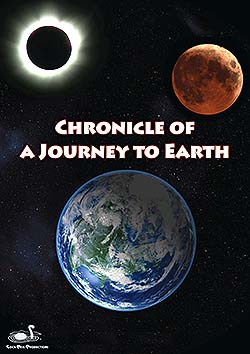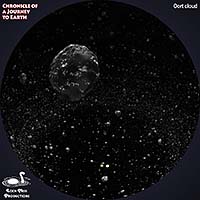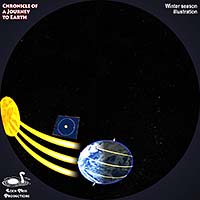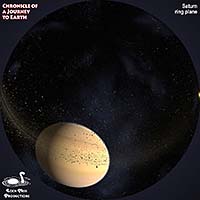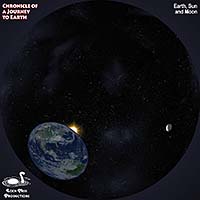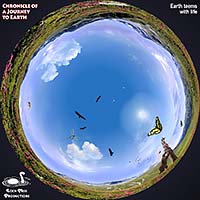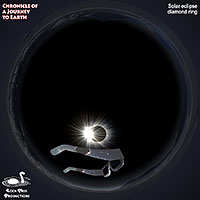Chronicle of a Journey to Earth
Travel to a unique planet — to call your home!
Imagine that you are a traveler from the depths of interstellar space. As you approach our solar system, what will you find? Long before you reach the Sun, you traverse the Oort cloud, the deep freeze at the outermost reaches. You pass by the gas giants and their families of moons and rings. Finally, you reach the inner solar system, and the rocky worlds of Mars, Earth, Venus and Mercury.
If you were looking for a place to call home, which world would YOU choose?
From the cold frontier inhabited by the dwarf planets of the outer solar system to the warmth of the Sun, any self-respecting traveler would ultimately be drawn to Earth, to explore and understand how this planet alone has come to be an ideal haven for life. Discover seasonal climate changes, and witness wondrous visions from the surface of this unique world — Moon phases and eclipses.
Come along for the ride, and see our neighborhood in space from a new perspective.
Chronicle of a Journey to Earth combines the videography and animation created by Antares Fulldome of Barcelona (who originally produced the show in 2009) with the soundtrack expertise of Loch Ness Productions. Our version features a revised script by Carolyn Collins Petersen, who also narrates the show. The soundtrack was produced by Mark C. Petersen, featuring original music from the vast resources of our popular MUSIC BACK-PACK Library.

Running time: 20:21
Suitable for: General public
Information about: Solar System
Year of production: 2008; LNP version 2010
Don't see the language you want? Let's work together with the producer to create it. Read more here!
Chronicle of a Journey to Earth is a tour of the solar system from the outside in, focused on Earth and how it is unique. The viewer learns about each of the planets, as well as the difference between rocky and giant planets, and is introduced to dwarf planets and other objects in the solar system. Once on Earth, the viewer is taught about specific sky events that distinguish Earth from other planets: lunar phases, and lunar and solar eclipses. The viewer also learns about the way that Earth's seasons work and how they depend on Earth's tilt on its axis and its relationship to the Sun. These concepts are woven together into a documentary journey and help relate the information presented in the show to the lives of students, families, and the general public.
Show content is relevant in the following subject areas:
Physical Science, Life Science, and Earth and Space Science Standards
- objects in the sky: Sun, Moon, planets, moons, rings, comet nuclei, asteroids
- properties of solar system objects
- properties of Earth and Moon
- properties of orbital motions
- properties of eclipses and how they relate to orbital motions
Science as Inquiry
- Understanding the concepts behind the motion of solar system objects
Science in Personal and Social Perspectives
- Earth's place in the solar system and in the Earth-Moon system
- Earth's specific seasons and what we experience (energy in the Earth system)



